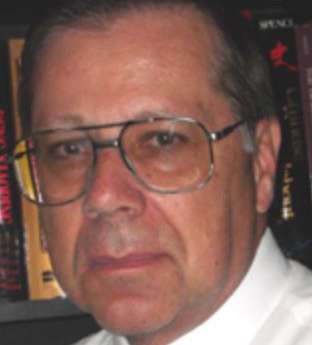
By JOHN RICHARD SCHROCK
In 1971, there were about 2400 doctorates in engineering awarded to U.S. citizens and a little more than 500 awarded to foreign students studying in the United States. But the numbers of American students were rapidly dropping and many engineering departments became worried over whether they would have enough students to sustain their program. By 1980, the number of U.S. citizens gaining doctorates had dropped below 1200, but the number of foreign university students was starting to grow and by 1983 surpassed American students in engineering doctorates. They did not force U.S. students out; they took up empty seats. And ever since, we have relied on foreign students to fill out our engineering programs and for many to remain and fill our shortage of engineers.
Similar graphs can be drawn for physics, chemistry and molecular biology where increasing numbers of foreign students are filling empty seats in graduate programs. Only in organismic biology is there a slight majority of American students earning graduate degrees because that is a field where experience with local wildlife provides an advantage.
In 1999, the Taiwan scientist Wen Ho Lee who was working at the Los Alamos National Laboratory on nuclear research was falsely charged with 58 out of 59 counts of stealing information. Lee eventually was awarded $1.6 million from the government and media in a civil settlement. What the American public never learned was that other scientists from Taiwan who held U.S. citizenship recognized the anti-Asian nature of this action and packed up their families and passports and returned to Taiwan. I only know of this from having two former student teachers teaching in Taiwan’s Hsinchu science city high school.
Meanwhile the Director of Los Alamos National Laboratory was called before a Senate investigative committee and asked why there were any “foreigners” working at our nuclear lab. The answer was simple; without foreign scientists, we would have to close down the lab. The director clearly explained how foreign scientists were not in a position to steal any secrets, but were central to the lab’s operation.
Long ago the U.S. gave up its lead in particle accelerators, astronomy, artificial intelligence, and many other fields. The Sabin oral polio vaccine was conducted in Russia in the 1950s, and much drug research today is conducted overseas due to American litigation risks. An increasing number of medical students are foreign born.
There are two major drivers of this decline in American production of scientists. One is the trivial amount of science taught in our K-12 schools. Since the 1970s, science education has failed to expand, unlike schools in Asia and Europe. Some of this is due to the AAAS “Less Science, Not More” movement that still today depresses high school science curricula. Part of our high-cost health care and ignorance on COVID-19 rests with a population never taught the instruction manual for our own bodies.
The other factor is lack of research funding. According to OECD data, the U.S. is now 28th of 39 nations in government funding of university research as a share of GDP. The 12 top governments invest over double the U.S. investment per GDP.
On August 28, the journal Science reported that China was again boosting research spending by more than 10 percent. Science research is published in open journals and the number of Chinese authors surpassed U.S. authors in 2017. China surpassed the U.S. in patents in 2019. Half of Chinese college graduates major in science. Less than 20 percent of American college graduates major in sciences.
The illusion that the U.S. is superior in science is partly due to Nobel Prizes. For instance, in 2009, we claimed eight of the nine science Nobel Prizes were swept by “United States scientists.” In truth only three received their early school education here. Most winners were educated elsewhere and came to the U.S. for better equipment and living standards. With the economic rise of Asia and Europe, we no longer have that equipment or economic advantage.
It would take a full generation to increase our science literacy if we increased science teaching. Meanwhile, the reduction in foreign students that has now begun will accelerate our decline in science graduates.
. . .
John Richard Schrock has trained biology teachers for more than 30 years in Kansas. He also has lectured at 27 universities in 20 trips to China. He holds the distinction of “Faculty Emeritus” at Emporia State University.





